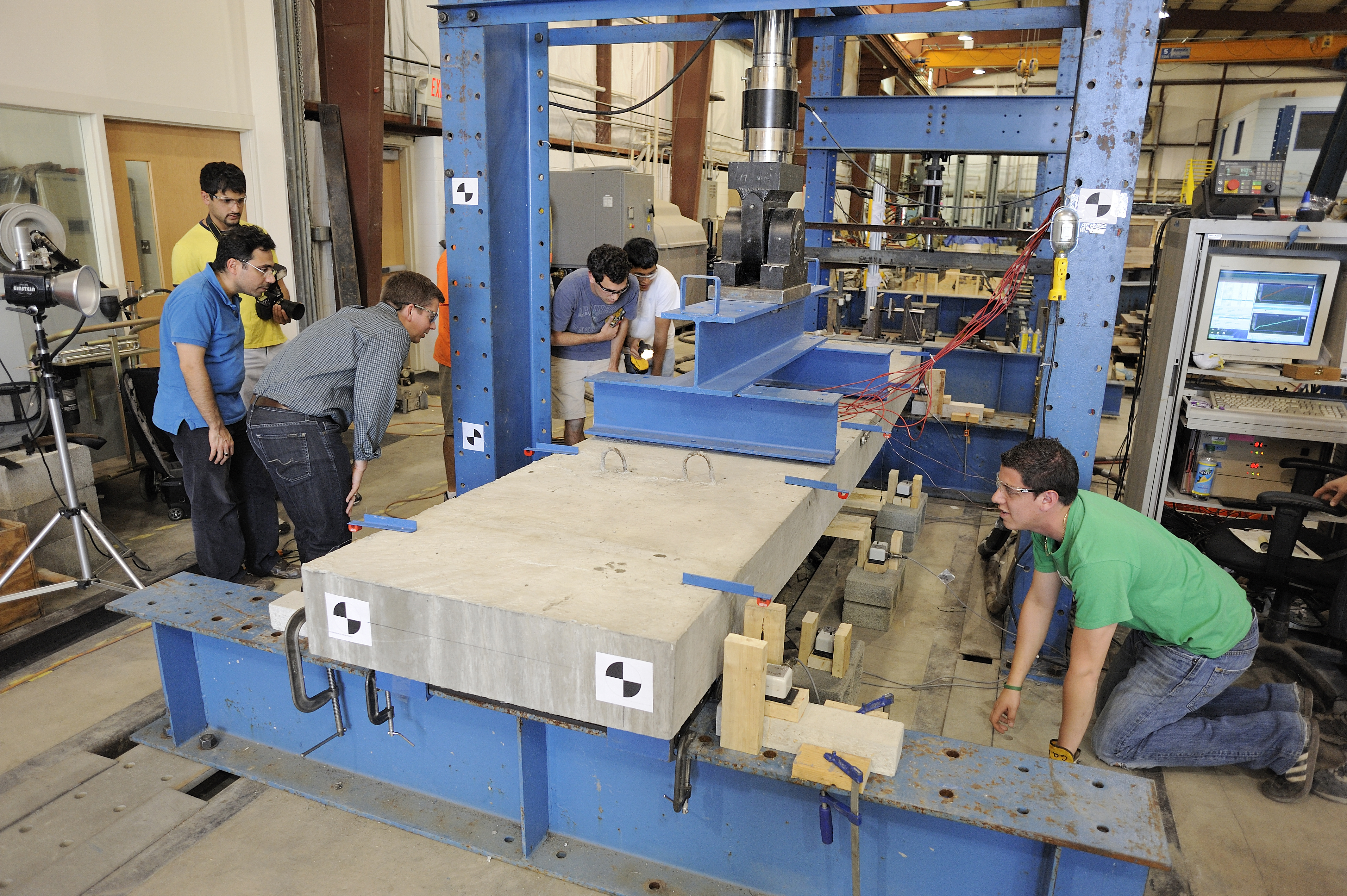Virginia Tech civil engineer's work shows promising benefits in bridge building

New insights into the performance of concrete materials are producing safer, less costly construction and a longer life for the nation's bridges and other structures, according to Cris Moen, an assistant professor of civil and environmental engineering at Virginia Tech.
One of his advances is the creation of an "accurate and accessible method for predicting (beam) behavior during lifting," Moen said. He and Raymond Plaut, emeritus professor of civil and environmental engineering at Virginia Tech, used a grant from the Precast/Prestressed Concrete Institute (PCI) to develop this technique.
They hope the results will help reduce the number of catastrophic failures during the lifting of long, precast concrete bridge girders. The most recent case of such a failure occurred in July 2012. A crane lowering a 52-ton highway girder collapsed, leaving one man dead at the Butte Des Morts Causeway in Oshkosh, Wisc.
According to the Occupational Safety and Health Administration, the construction industry had the most workplace fatalities in 2010 with 774. Governing design codes require very basic stability checks, but they currently lack guidance for lifting precast prestressed beams, Moen said.
Moen also has completed the first third of a three-year project funded by the Virginia Center for Transportation Innovation and Research, the research division of the Virginia Department of Transportation. He analyzed the structural benefits of corrosion-resistant reinforcing steel bars in bridge decks. Moen is collaborating with Mani Golparvar-Fard, assistant professor of civil and environmental engineering at Virginia Tech, to digitally recreate and compare results of the different tests.
In addition, the National Science Foundation awarded Moen a grant to model the performance and structural analysis of ultra-high performance concrete. Moen started work on this current project in August with Gianluca Cusatis, an associate professor of civil and environmental engineering at Northwestern University.
Moen said he "emphatically" believes in collaborating with others to expedite and focus research and to tap their different strengths and areas of expertise. He relies on Plaut's 40 years of experience in solving structural stability and mechanics problems and Cusatis' groundbreaking work on mesoscale interactions within cement-based composites to add to his own skill set. Mesoscale usually refers to an object as small as 100 nanometers or individual atoms to as large as 1,000 nanometers, an actual material.
Through his statistical analysis of geometric imperfections, Moen has fashioned recommendations and a computational tool with simplified equations for a beam's mechanical behavior. The information can be placed in an Excel file so construction personnel can get a quick, reliable estimate.
Moen says this freely accessible spreadsheet, is accurate to within 5 percent. He said it also gives more reliable information about a beam's internal forces and deflections to contractors and engineers than previous work from the early 1990s by Robert Mast, former president and chairman of BergerABAM. Moen and Plaut used Mast's technical papers as the starting point for their new work.
As the first year wraps up for Moen's investigation of corrosion-resistant reinforcing steel bars and his first series of tests, the civil engineer expressed excitement that his work is demonstrating the structural benefits of them, which typically is stronger than normal grade steel when compared with bars of equal diameters. Moen said his results promise a longer life for bridge decks, resulting in fewer lane and road closures for future maintenance. Construction costs would remain about the same because, while those bars are more expensive, the highway agency will need to use less of this new corrosion-resistant material to provide the same structural performance in a bridge deck, according to Moen.
Corrosion-resistant reinforcing steel bars will also reduce deterioration in bridge decks, caused by road salts penetrating the driving surface into the reinforcement, reducing maintenance costs. Slab tests, finished in July 2012, compared the performance of three types of the bars, including stainless steel and new tailored steel microcomposites and one standard grade bars within two different deck options. Moen said he hopes the findings from these tests will be immediately useful to VDOT.
Moen first met Cusatis at an NSF review panel. After discussing some of their previous endeavors regarding ultra-high performance concrete, they formulated a proposal to deliver a general computational model that could perform structural analysis causing full-scale ultra-high performance concrete components to collapse.
Moen wanted to apply his previous work on the computational lattice modeling of the concrete, performed in conjunction with professors Carin Roberts-Wollman and Tommy Cousins, both professors of civil and environmental engineering at Virginia Tech, and John Bolander from the University of California -- Davis. This work included research on random cracking, sponsored by the Institute of Critical Technology and Applied Science at Virginia Tech, and Moen combined the findings with Cusatis' mesoscale models to full-scale structures made of ultra-high performance concerete.
Written by Neal Moriconi.




